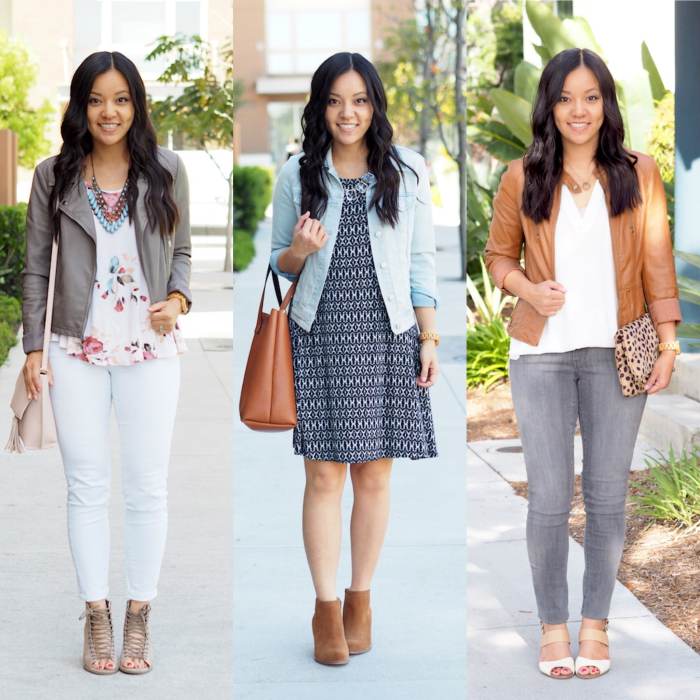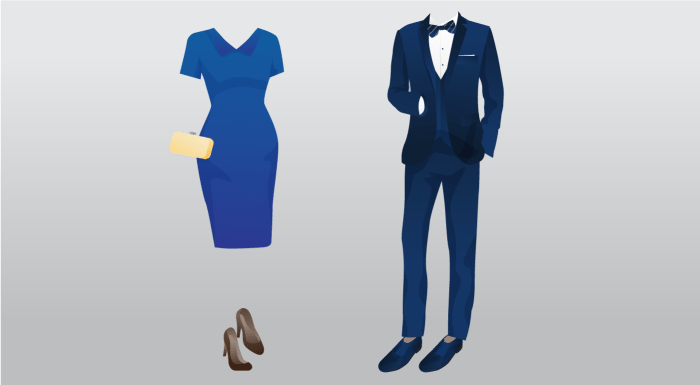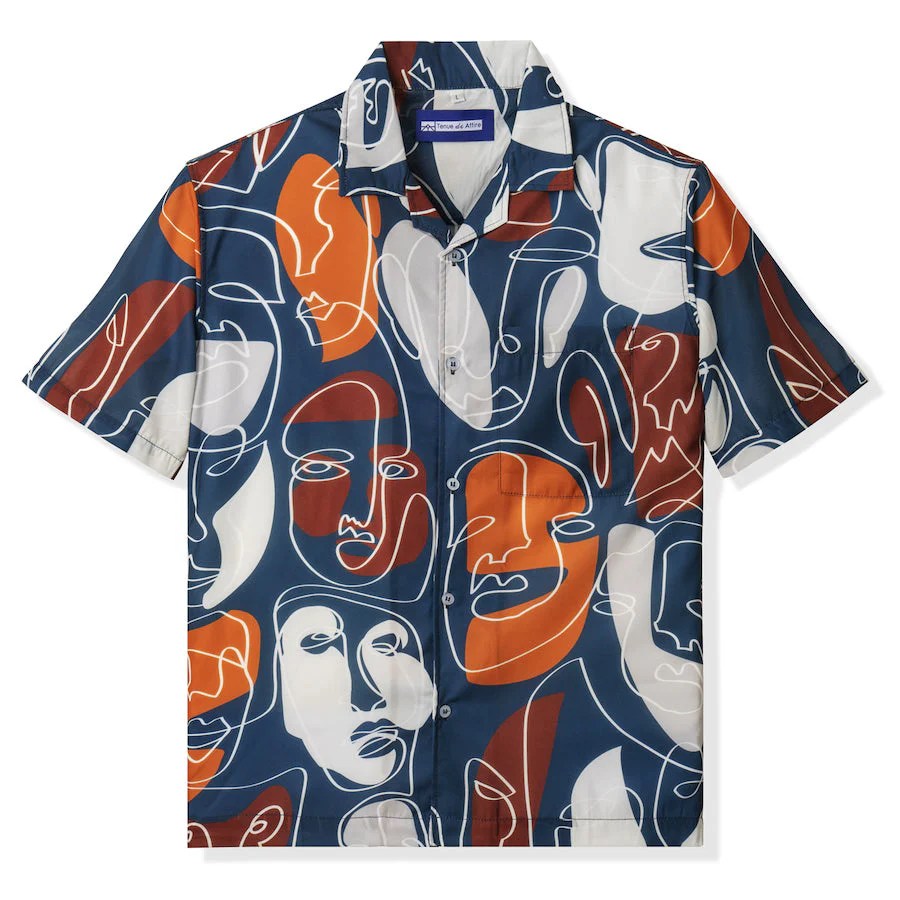Formal Wedding Guest Dress Code Guide
Deciphering Formal Wedding Guest Dress Codes
Formal wedding guest dress code – Navigating wedding dress codes can be tricky, especially when dealing with the nuances of “formal.” This section clarifies the distinctions between formal, semi-formal, and informal attire, providing examples and guidelines for both men and women.
Formal vs. Semi-Formal vs. Informal Attire
A formal wedding demands the most elegant attire. Think floor-length gowns for women and tuxedos or suits for men. Semi-formal allows for slightly less structured options, such as cocktail dresses or dressy pantsuits for women and suits or sport jackets with dress pants for men. Informal weddings offer the most flexibility, potentially including stylish but less formal options like sundresses or chinos.
Appropriate and Inappropriate Attire Examples
For a formal wedding, women might wear a floor-length gown, a sophisticated cocktail dress, or a pantsuit in a luxurious fabric. Inappropriate choices would include jeans, casual dresses, or anything overly revealing. For men, a tuxedo is ideal, but a well-tailored suit is also acceptable. Inappropriate choices include casual shirts, jeans, or sneakers.
Men’s and Women’s Formal Wedding Attire: Key Differences
Formal attire for women generally involves floor-length gowns or elegant cocktail dresses, often made from luxurious fabrics like silk or velvet. Men’s formal attire typically includes a tuxedo, a dark suit, or a formal dinner jacket.
Formal Wedding Attire: A Comparison
| Attire Type | Description | Appropriateness for Formal Wedding | Potential Alternatives |
|---|---|---|---|
| Floor-length gown | Elegant, usually made from luxurious fabric | Highly appropriate | Sophisticated cocktail dress, pantsuit |
| Tuxedo | Formal suit with tails and often satin lapels | Highly appropriate | Dark suit with a dress shirt and tie |
| Cocktail dress | Knee-length or slightly longer dress, often more embellished | Appropriate, depending on formality level | Dressy pantsuit |
| Suit (men) | Well-tailored suit in dark color | Generally appropriate | Sport jacket with dress pants |
Appropriate Fabrics and Silhouettes for Formal Wear
The choice of fabric and silhouette significantly impacts the overall look of a formal wedding guest outfit. This section explores suitable fabrics, flattering silhouettes, and dress styles for various body types and age groups.
Suitable Fabrics
Luxurious fabrics like silk, velvet, lace, and brocade are ideal for formal events. These fabrics add an element of sophistication and elegance. Avoid overly casual fabrics like cotton jersey or denim.
Flattering Silhouettes

Source: puttingmetogether.com
A-line silhouettes are universally flattering, while empire waistlines are particularly kind to those with a fuller figure. Sheath dresses are elegant and suitable for slimmer body types. Consider the overall balance and proportions when choosing a silhouette.
Dress Styles for Different Age Groups

Source: ctfassets.net
Floor-length gowns are classic and timeless for any age group. Cocktail dresses offer a more modern alternative, particularly suitable for younger guests. Older guests might prefer elegant pantsuits or knee-length dresses with sophisticated details.
Ideal Fabric and Silhouette for a Formal Evening Wedding
For a formal evening wedding, a floor-length gown in silk or velvet with an A-line or empire waist silhouette would be ideal. This combination offers elegance, comfort, and flattery for a wide range of body types.
Color Considerations for Formal Wedding Guest Attire
Color choices play a significant role in creating an appropriate and stylish look for a formal wedding. This section addresses appropriate and inappropriate colors, the etiquette surrounding white and black, and suitable color palettes.
Appropriate and Inappropriate Colors, Formal wedding guest dress code
Jewel tones (emerald, sapphire, ruby) and rich, deep colors are generally considered appropriate. Avoid wearing white (unless specifically requested by the couple), very bright colors, or anything too attention-grabbing.
Wearing White or Black
Traditionally, white is reserved for the bride, and wearing it as a guest is generally discouraged. Black can be appropriate, particularly for evening weddings, but ensure the outfit is sophisticated and not overly somber.
Color Palettes for Formal Events
Jewel tones offer richness and sophistication, while muted pastels can be elegant for daytime weddings. Bright, bold colors should generally be avoided, as they can detract from the overall formality of the event.
Appropriate and Inappropriate Color Choices
- Appropriate: Navy blue
- Appropriate: Emerald green
- Appropriate: Burgundy
- Appropriate: Deep purple
- Appropriate: Gray
- Inappropriate: White
- Inappropriate: Bright pink
- Inappropriate: Neon colors
- Inappropriate: Bright yellow
- Inappropriate: Light beige (too close to white)
Accessories and Details for a Formal Wedding Guest Look: Formal Wedding Guest Dress Code
Accessories are crucial for completing a formal wedding guest look. This section provides guidance on selecting appropriate jewelry, handbags, shoes, and headwear.
Appropriate Accessories
Elegant jewelry (avoid overly flashy pieces), a small, sophisticated clutch, and dressy heels or elegant flats are suitable. The accessories should complement the outfit without overpowering it.
Complementing the Outfit
Choose accessories that enhance the overall look, considering the color, fabric, and style of the dress or suit. Avoid clashing colors or overly large or distracting pieces.
Headwear Etiquette
Headwear is generally not necessary unless specified by the invitation or venue (e.g., a church wedding). If worn, it should be elegant and understated.
A Complete Formal Wedding Guest Outfit
Imagine a floor-length navy blue silk gown with subtle embellishments. Paired with delicate diamond earrings, a small black satin clutch, and elegant black heels, the look is both sophisticated and understated. The overall aesthetic is classic elegance with a touch of modern flair.
Addressing Specific Scenarios and Variations in Formal Dress Codes
The interpretation of “formal” can vary based on the wedding’s location, any additional instructions on the invitation, and the season. This section offers guidance for navigating these different scenarios.
Variations in “Formal” Based on Location
A formal church wedding might call for more traditional attire than a formal outdoor garden wedding, which might allow for slightly more relaxed, yet still elegant, choices.
Interpreting Additional Instructions
“Black-tie optional” suggests a tuxedo is preferred but a dark suit is acceptable. “Cocktail attire” indicates a less formal level of dress than “formal” but still requires elegant clothing.
Navigating formal wedding guest dress codes can sometimes feel tricky. However, incorporating seasonal palettes can make choosing an outfit much easier. For autumnal nuptials, consider the rich hues available by checking out some stylish options at fall colors wedding guest dress to find the perfect balance of elegance and seasonal flair. Remember, adhering to the dress code’s formality level remains paramount, regardless of the color palette selected.
Seasonal Considerations

Source: tenuedeattire.com
For a summer wedding, lighter fabrics like silk or linen might be preferred. For a winter wedding, richer fabrics like velvet or brocade would be more suitable. The color palette can also be adjusted accordingly.
Formal Wedding Attire in Different Settings
| Setting | Appropriate Attire (Women) | Appropriate Attire (Men) |
|---|---|---|
| City Hall | Elegant pantsuit or cocktail dress | Dark suit or tuxedo |
| Beach | Long, flowing maxi dress (appropriate fabric) | Linen suit or dress pants with a button-down shirt |
| Church | Floor-length gown or elegant cocktail dress | Tuxedo or dark suit |
General Inquiries
What if the invitation doesn’t specify a dress code?
If the invitation lacks a dress code, err on the side of caution and opt for semi-formal attire. A cocktail dress or a suit is generally a safe bet.
Can I wear a jumpsuit to a formal wedding?
A sophisticated jumpsuit in a luxurious fabric like silk or velvet can be appropriate for a formal wedding, provided it’s elegant and doesn’t look too casual.
What about hats or fascinators?
While hats and fascinators are generally acceptable at formal weddings, it’s advisable to check the wedding’s location and overall style. A large hat might be unsuitable for a smaller, intimate venue.
Is it okay to wear sequins or embellishments?
Sequins and embellishments can be appropriate for a formal wedding, but avoid anything overly flashy or distracting. Subtle sparkle is generally preferable.



















